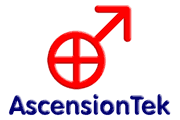Silvergreen Business Model
Silvergreen Pty. Ltd.
An important consideration for any ecovillage is designing the most appropriate legal structure.
Probably the best structure for an ecovillage in Australia is for the ecovillage to be owned by a company set up especially for that purpose. People can then own some of the ecovillage by owning shares in the company.
Silvergreen P/L will act in a similar way to a body corporate, with decisions about the development being made collectively by owners and tenants.
At Silvergreen everyone will own the land in common, since there is no subdivision. House lots will only have "soft borders", i.e. there will be an area (average of 2000m2) allocated for each house, and tenants will have the freedom to develop this area as they wish, within community guidelines (e.g. much of this area will be needed for permaculture, but some can be allocated for children, pets or flower gardens). However, from a legal standpoint all the land on the site will be owned by all owners collectively, and there will be no clearly defined housing lots in the usual sense.
Owners will pay rates to Silvergreen P/L, which will then pay rates to council for the whole site, as well as take care of any other expenses related to maintenance and development. Owners will be responsible for their own homes, and they may rent out their homes to other parties in the usual way, as long as those people agree to comply with the policies of the ecovillage.
Tax Benefits
One of the main advantage of setting the ecovillage up as a business is the tax advantages, since all of the ecovillage's operating expenses, including rates, mortgage repayments, maintenance, upgrades and staff wages become tax deductible. As this significantly lowers the operating costs of the site, this will affect all residents directly because their rates can also be reduced.
This is a huge advantage over the "usual" method of owning a private home and paying rates and other expenses with after-tax dollars.
A common method of reducing tax is setting up part of the home as a business, which allows you to claim a proportion of your rates, maintenance, electricity, water, etc. This technique could probably also be applied within the ecovillage - if people are operating businesses from their homes within the ecovillage, they could probably claim part or all of the rates that they pay to Silvergreen.
Generating Income
In order to demonstrate to the ATO that the ecovillage is actually a business, it will be necessary to use it to generate an income.
Methods for doing this may include hosting seminars, delivering courses, or selling electricity, fresh produce or crafts. It may even be appropriate to operate the ecovillage as a sort of "eco-retreat", providing a variety of services to short-term tenants or holiday-makers such as massage, naturopathy, etc.
This income can be used to offset costs of maintaining the site, or for further development.
Capital Growth
Although there will be expenses associated with the ecovillage, these will be more than offset by the capital growth. The plan is to select a site that will grow at a higher-than-average rate, and almost anywhere in the Samford Valley area certainly falls into this category, being relatively close to Brisbane and within the much-loved region of South-East Queensland.
Most developers go for the highest possible density, as high as the council will let them. This is because developers make their money from property sales, so the more houses on a certain area of land, the more money can be made.
Property investors, on the other hand, make their money from owning property, not selling it. The situation is almost reversed. Investors know that the higher the land component of a property, the higher the rate of growth. This happens simply because land appreciates in value due to lack of supply, yet buildings depreciate in value because they get old. Hence, investors almost always prefer houses to units, because houses come with more land.
As builders of Silvergreen, we will be establishing ourselves as developer-investors, i.e. we will develop and build the site, but then keep most of it for ourselves. This gives a double advantage. Sustainable development is all about low density, i.e. using a large percentage of the land for wildlife conservation and agriculture. Since we are not selling the properties we develop, we then reap the benefit of a higher rate of capital growth due to the higher land component. This is a great strategy for making a lot of money while also saving the environment, and we hope that many other developers will begin to adopt this approach.
The development company, AscensionTek, will still sell shares in the ecovillage, which is functionally equivalent to a traditional developer selling house-and-land packages. However, as mentioned above, AscensionTek will retain some shares in the ecovillage so that it can reap some of the capital growth of the site. By using this strategy, AscensionTek then has less reason to sell shares in the ecovillage at a profit, which means lower prices become feasible. The advantage here is that the price of shares in the ecovillage become comparable to ordinary house-and-land packages, yet with multiple bonuses including a high land component, higher-than-usual capital growth, free electricity, purified water and fresh food, access to the community centre, and the fun of living in an ecovillage.



